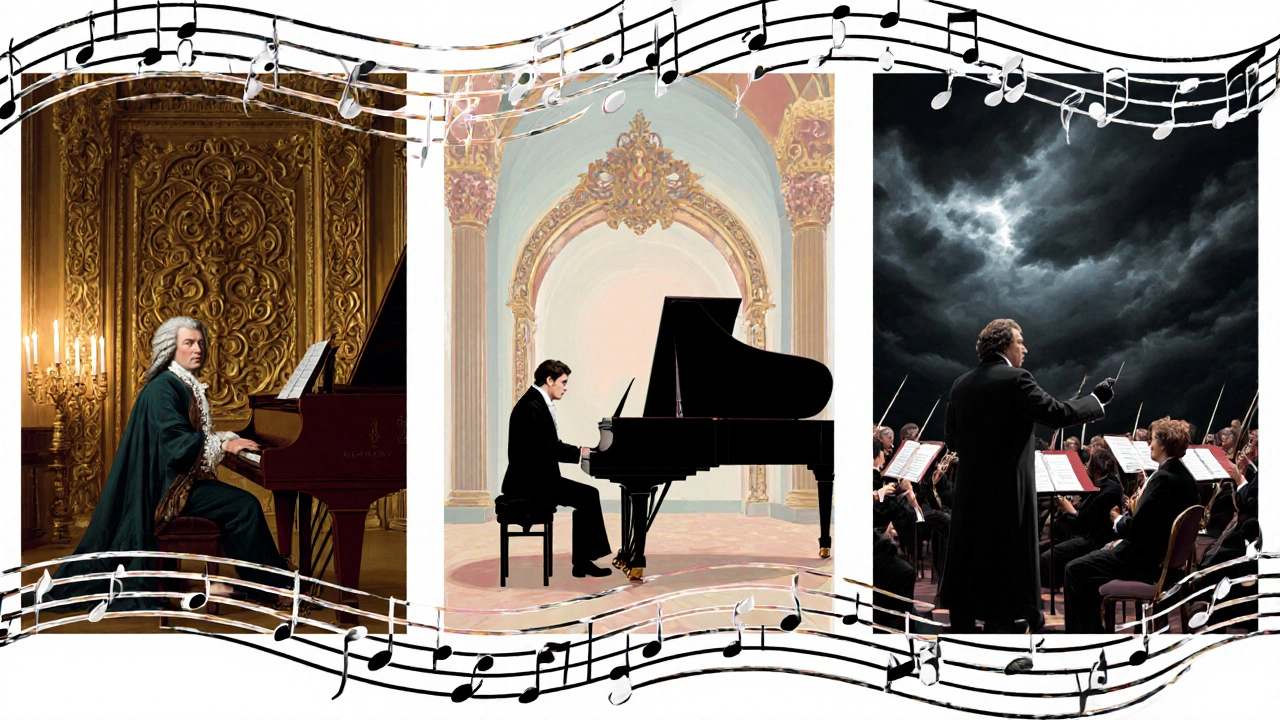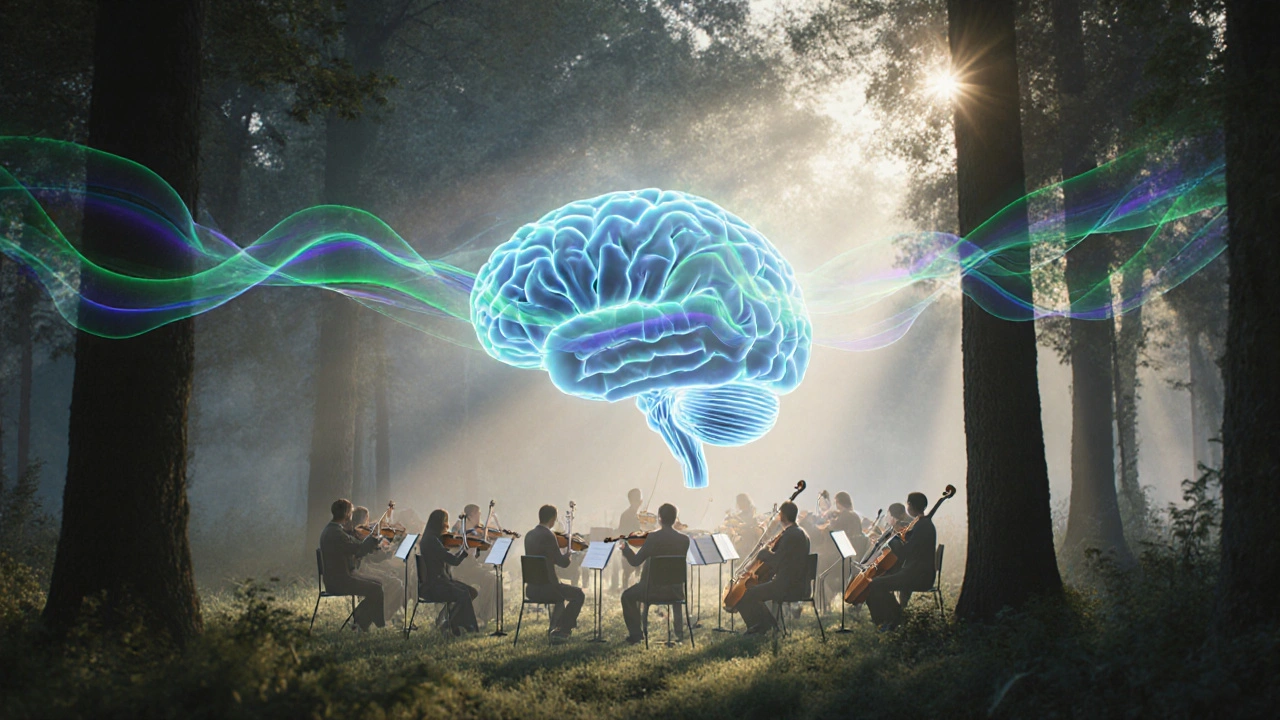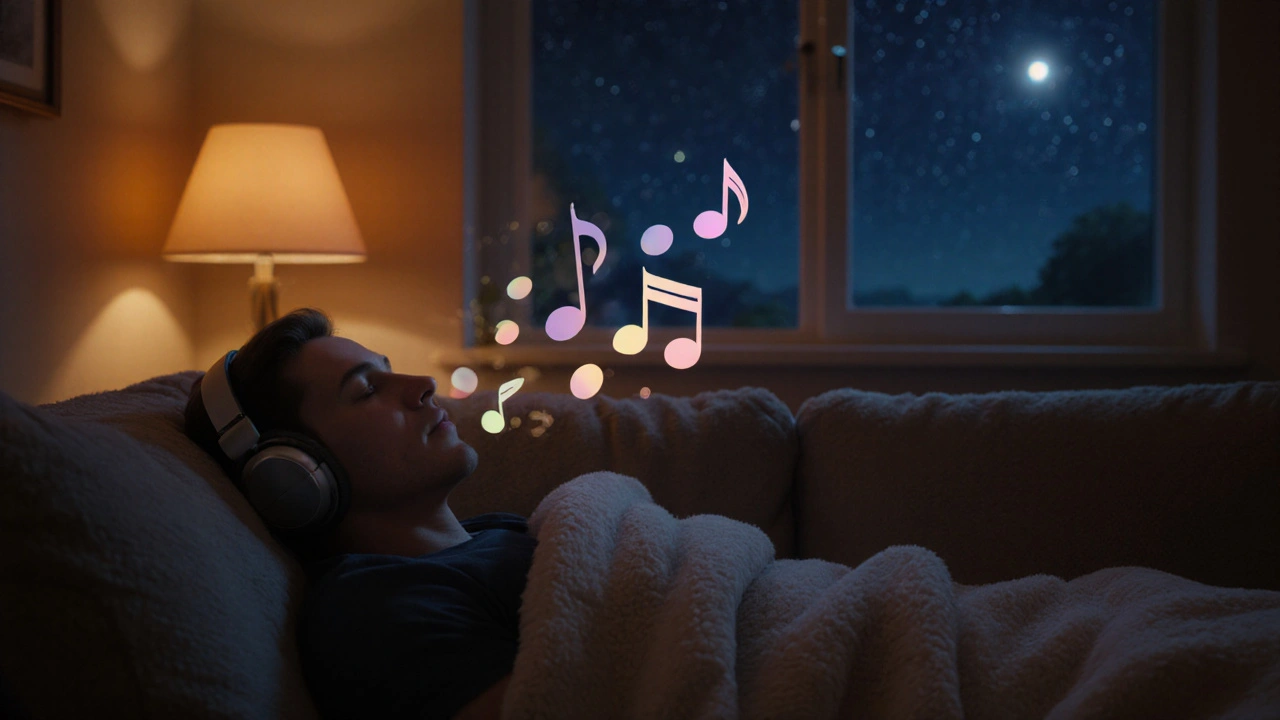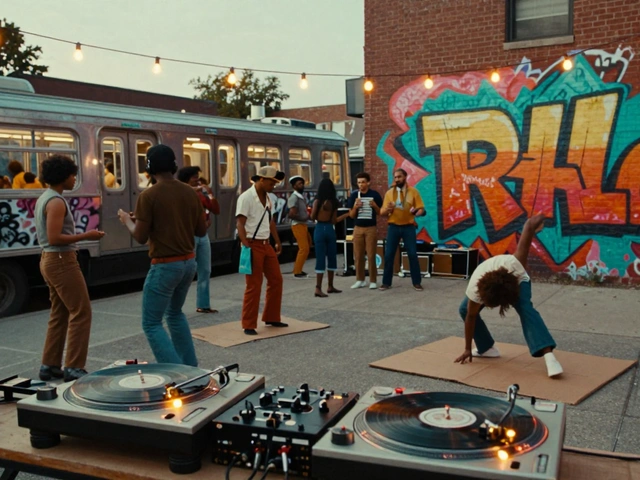Ever felt a single chord melt away tension, like a warm blanket on a chilly night? That’s the power of Classical music - a genre that can turn a hectic day into a calm oasis for the mind and heart.
What makes classical music a "symphony for the soul"?
When you hear Classical music is a genre of art music rooted in Western liturgical and secular traditions from the 11th century to the present, you’re actually tapping into centuries of cultural evolution, scientific research, and emotional storytelling.
Unlike the quick‑hit beats of pop, classical pieces unfold over minutes, sometimes hours. This extended form lets listeners ride a gentle wave of tension and release, mirroring the natural rhythm of breath and heartbeat.
Historical layers that shape the listening experience
The journey begins in the Baroque period is a style from roughly 1600‑1750 characterized by ornate melodies, steady bass lines and the birth of the concerto grosso. Composers like Johann Sebastian Bach is a German composer whose intricate counterpoint still teaches music theory today pushed harmony to new heights, creating structures that still feel mathematically satisfying.
Fast‑forward to the Classical period is the era from 1730‑1820 marked by clarity, balance, and form, best exemplified by symphonies and sonatas. Here, Wolfgang Amadeus Mozart is an Austrian prodigy whose melodies combine elegance with emotional depth taught us that simplicity can be profoundly moving.
The Romantic era is an expressive period from 1820‑1910 where composers like Ludwig van Beethoven expanded emotional boundaries. Beethoven’s late symphonies, especially the Ninth, turn music into a spiritual quest, inviting listeners to contemplate joy, struggle, and triumph.
Key musical forms that resonate with the mind
- Symphony is a multi‑movement orchestral work that explores themes over a long span, often four movements. Its ebb and flow can guide the brain through cycles of focus and relaxation.
- String quartet is a chamber ensemble of two violins, a viola, and a cello, prized for intimacy and conversational interplay. Listening to a quartet feels like eavesdropping on a private dialogue.
- Orchestra is a large ensemble of strings, woodwinds, brass, and percussion that creates a rich sonic tapestry. The sheer scale can evoke awe, a feeling linked to reduced stress hormones.

Why the brain loves classical music
Neuroscientists have measured brainwaves while participants listen to a Mozart sonata. The result? An increase in alpha wave activity - the same pattern seen during meditation. This suggests the music encourages a relaxed yet alert mental state.
Research from the University of Helsinki showed that students who listened to Baroque music is characterized by a tempo of around 60 beats per minute, similar to a resting heart rate performed better on spatial‑reasoning tests than those who studied in silence.
Beyond cognition, a 2023 meta‑analysis linked regular listening to classical pieces with lower cortisol levels, improved mood, and even better sleep quality. In other words, the genre works like a gentle therapist for the nervous system.
Practical ways to weave classical music into daily life
- Start mornings with a short Allegro movement - the upbeat tempo sets a positive tone.
- Play a calming Adagio during evening chores to make routine tasks feel more graceful.
- Use a String quartet is an intimate chamber group that works well for background listening while reading or studying as a focus aid.
- Schedule a weekly “concert hour” where you sit down, close your eyes, and let a full Symphony is a large‑scale orchestral composition typically split into four movements play out without interruption.
- Combine listening with light stretching or yoga; the rhythm helps synchronise breath and movement.
How classical music stacks up against other genres (quick comparison)
| Genre | Stress Reduction | Focus Enhancement | Mood Lift |
|---|---|---|---|
| Classical | High | High | Medium‑High |
| Pop | Low‑Medium | Medium | High |
| Jazz | Medium | Medium‑High | Medium |
| Rock | Low | Medium | High |
Numbers are based on a mix of peer‑reviewed studies and large‑scale surveys conducted between 2018‑2024. Classical consistently ranks at the top for stress relief and sustained attention.

Beyond the concert hall: Classical music in therapy
Modern Music therapy is a clinical discipline that uses music interventions to address physical, emotional, cognitive, and social needs often incorporates classical pieces because of their predictable structure and emotional range.
Hospitals in Vienna, where the Vienna Philharmonic is one of the world’s leading orchestras, famous for its rich tonal palette partners with therapists to play live Mozart for post‑surgical patients, reporting faster recovery times.
Even at home, simple playlists of Bach’s Cello Suites can lower heart rate variability, a metric clinicians use to gauge stress resilience.
Key Takeaways
- Classical music’s slow tempos and harmonic predictability boost alpha brainwaves, fostering relaxation.
- Historical eras (Baroque, Classical, Romantic) each offer distinct emotional tools; choose what feels right for the moment.
- Regular listening correlates with reduced cortisol, better focus, and improved sleep.
- Integrate short pieces into daily routines - mornings, work sessions, and bedtime.
- When possible, experience live performances; the visual element deepens the therapeutic effect.
Frequently Asked Questions
Can classical music improve my concentration while studying?
Yes. Studies show that listening to Baroque pieces at ~60 bpm can increase alpha wave activity, which is linked to a relaxed yet alert state ideal for learning.
Which classical composers are best for stress relief?
Mozart’s piano sonatas, Bach’s cello suites, and Debussy’s impressionistic works consistently rank high in surveys measuring perceived calm.
Do I need high‑quality speakers to feel the benefits?
While crystal‑clear audio enhances the experience, even modest headphones can trigger the brain’s response as long as the recording is clean and free from heavy distortion.
How long should a listening session be for maximum effect?
Aim for 15‑30 minutes. Short enough to stay engaged, long enough for the brain to settle into the music’s rhythm.
Is live classical music more beneficial than recordings?
Live performances add visual cues and acoustic richness, which can amplify emotional response. However, recordings are convenient and still deliver measurable stress‑reduction benefits.






